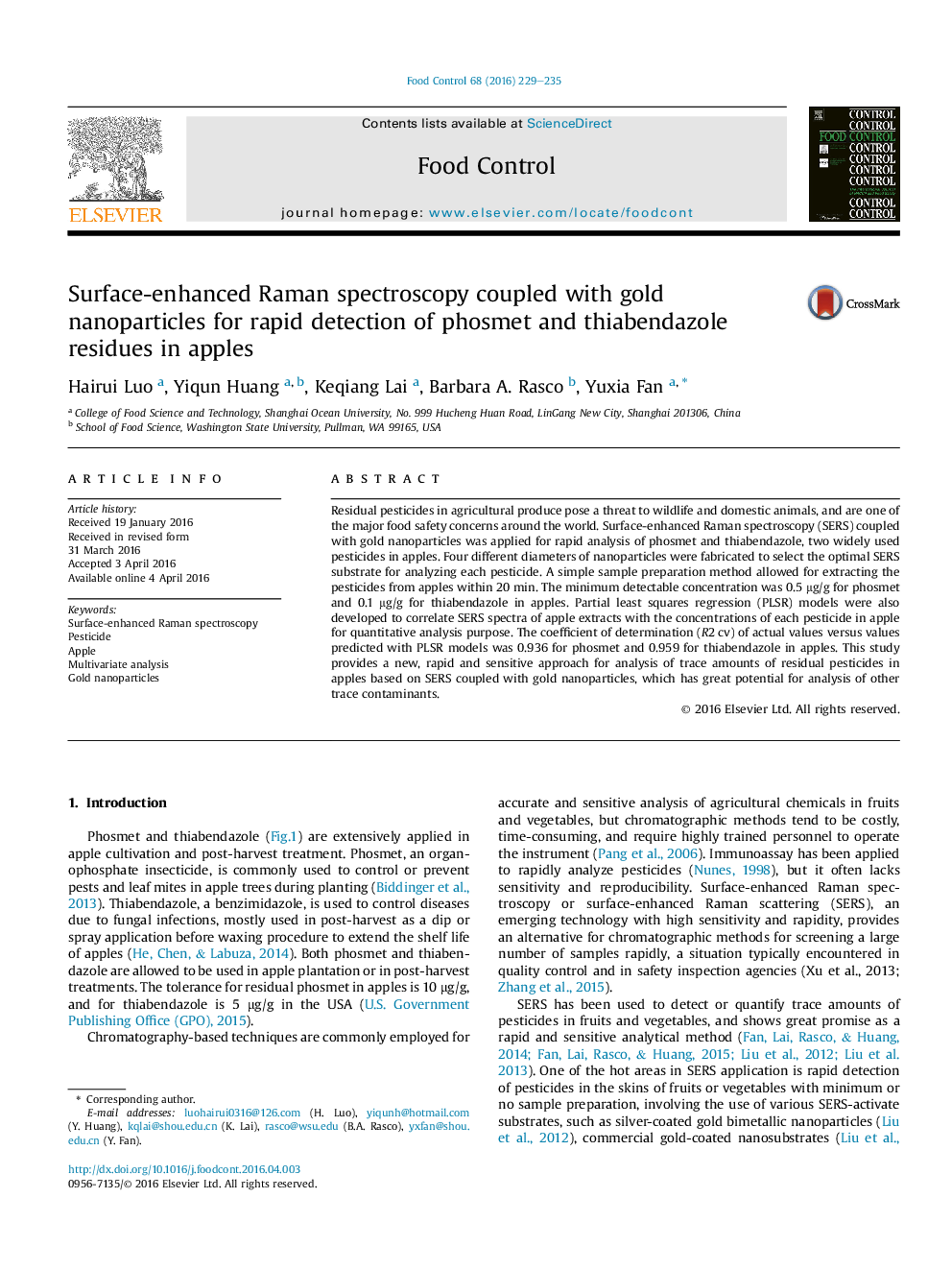| Article ID | Journal | Published Year | Pages | File Type |
|---|---|---|---|---|
| 4559047 | Food Control | 2016 | 7 Pages |
•Residual phosmet and thiabendazole in apples was analyzed with gold nanoparticles for SERS.•Trace phosmet and thiabendazole could be detected at levels as low as 0.5 μg/g and 0.1 μg/g in apple.•Different gold nanoparticles as SERS substrates were compared in an attempt to achieve optimal enhancement effects.•The novel method shows great potential for analysis of trace contaminants in food.
Residual pesticides in agricultural produce pose a threat to wildlife and domestic animals, and are one of the major food safety concerns around the world. Surface-enhanced Raman spectroscopy (SERS) coupled with gold nanoparticles was applied for rapid analysis of phosmet and thiabendazole, two widely used pesticides in apples. Four different diameters of nanoparticles were fabricated to select the optimal SERS substrate for analyzing each pesticide. A simple sample preparation method allowed for extracting the pesticides from apples within 20 min. The minimum detectable concentration was 0.5 μg/g for phosmet and 0.1 μg/g for thiabendazole in apples. Partial least squares regression (PLSR) models were also developed to correlate SERS spectra of apple extracts with the concentrations of each pesticide in apple for quantitative analysis purpose. The coefficient of determination (R 2cv) of actual values versus values predicted with PLSR models was 0.936 for phosmet and 0.959 for thiabendazole in apples. This study provides a new, rapid and sensitive approach for analysis of trace amounts of residual pesticides in apples based on SERS coupled with gold nanoparticles, which has great potential for analysis of other trace contaminants.
